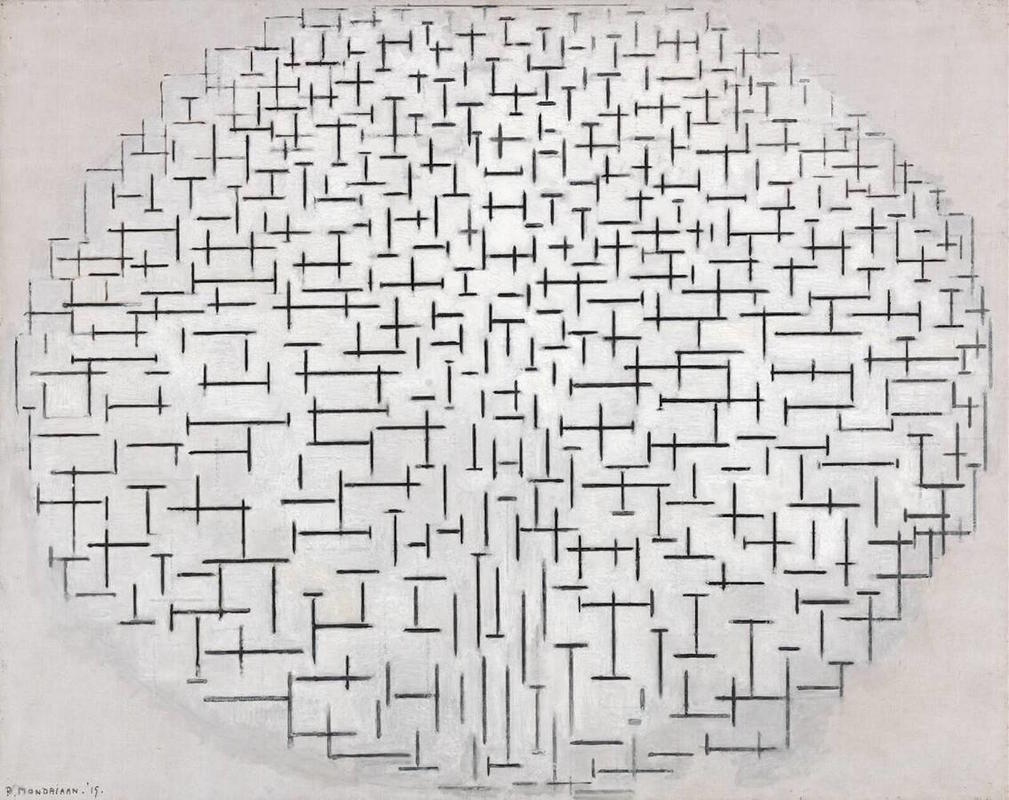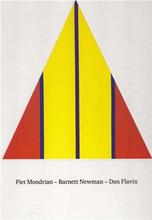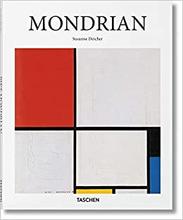More about Composition 10 in Black and White
- All
- Info
- Shop

Contributor
Mondrian's Composition 10 in Black and White, also named Pier and Ocean, draws upon mathematics and German Idealism to elicit "a most spiritual impression...the impression of repose: the repose of the soul," according to his colleague and fellow de Stijl artist van Doesburg.
Symbolically, the painting develops a nonverbal language, through a swarm of perpendicular intersections, to refer to the spiritual insight of the unity of opposites, as in the yin-yang, the relationship between nirvana and samsara in Buddhism, and hoshech and ohr, concealment and revelation, in Judaism.
The following mathematical principles are at work in Composition 10 in Black and White, the figural composition of which influenced Mondrian's era-defining Boogie-Woogie works:
-
Iterativity, characterized by repetition.
-
Nonlinearity, referring to a disproportionate relation between input and output.
-
Ergodicity, which, given enough time, includes or tends toward all points in a given space and has a relatively large statistical representation of points.
-
Stochasticity, relating to a probability distribution which is relatively unpredictable.
Following the work of Benoit Mandelbrot, mathematicians, physicists, and chemists have used these principles to develop the fields of chaos theory and nonlinear dynamics. Mandelbrot is known for coining the term "fractal," which describes nonlinear infinite patterns, with many structural similarities to Composition 10 in Black and White. Mondrian anticipated fractals and the psychedelic movement in art several decades before they reached the mainstream.
In Composition 10 in Black and White, Mondrian consciously drew upon his study of Hegel, the German philosopher who influenced Marx and Einstein, to apply the concept of Aufhebung (sublation), the process which throws something into relief by simultaneously canceling it out and raising it up, making it sacred by removing it from an economy of use and exchange. Hegel's extensive elaboration of Aufhebung was a major influence on Romanticism, and subsequent movements toward abstraction. "It is almost as if Mondrian rotated and elongated Pier and Ocean, 1915 through 90° for the purpose of intensifying the process of abstraction." Composition 10 in Black and White is a notable and unusual instance of an artist's deliberate use of Hegel's incredibly abstract meditations in the pursuit of pure abstraction, the highest goal of Warhol and many others.
Sources
- Alston, Isabella. Mondrian. Charlotte, NC: TAJ Mini Books, 2014.
- Blotkamp, Carel. Mondrian: The Art of Destruction. London: Reaktion Books, 2001
- Cooper, Harry. "Mondrian, Hegel, Boogie." October 84 (Spring, 1998): 118-142.
- Eiichi, Tosaki. Mondrian's Philosophy of Visual Rhythm: Phenomenology, Wittgenstein, and Eastern Thought. Berlin: Springer, 2017.
- Lodder, Christina, Maria Kokkori, and Maria Mileeva. Utopian Reality: Reconstructing Culture in Revolutionary Russia and Beyond. Leiden: Brill, 2013.
- Threlfall, Tim. Piet Mondrian: His Life's Work and Evolution, 1872 to 1944. New York: Garland, 1988.













